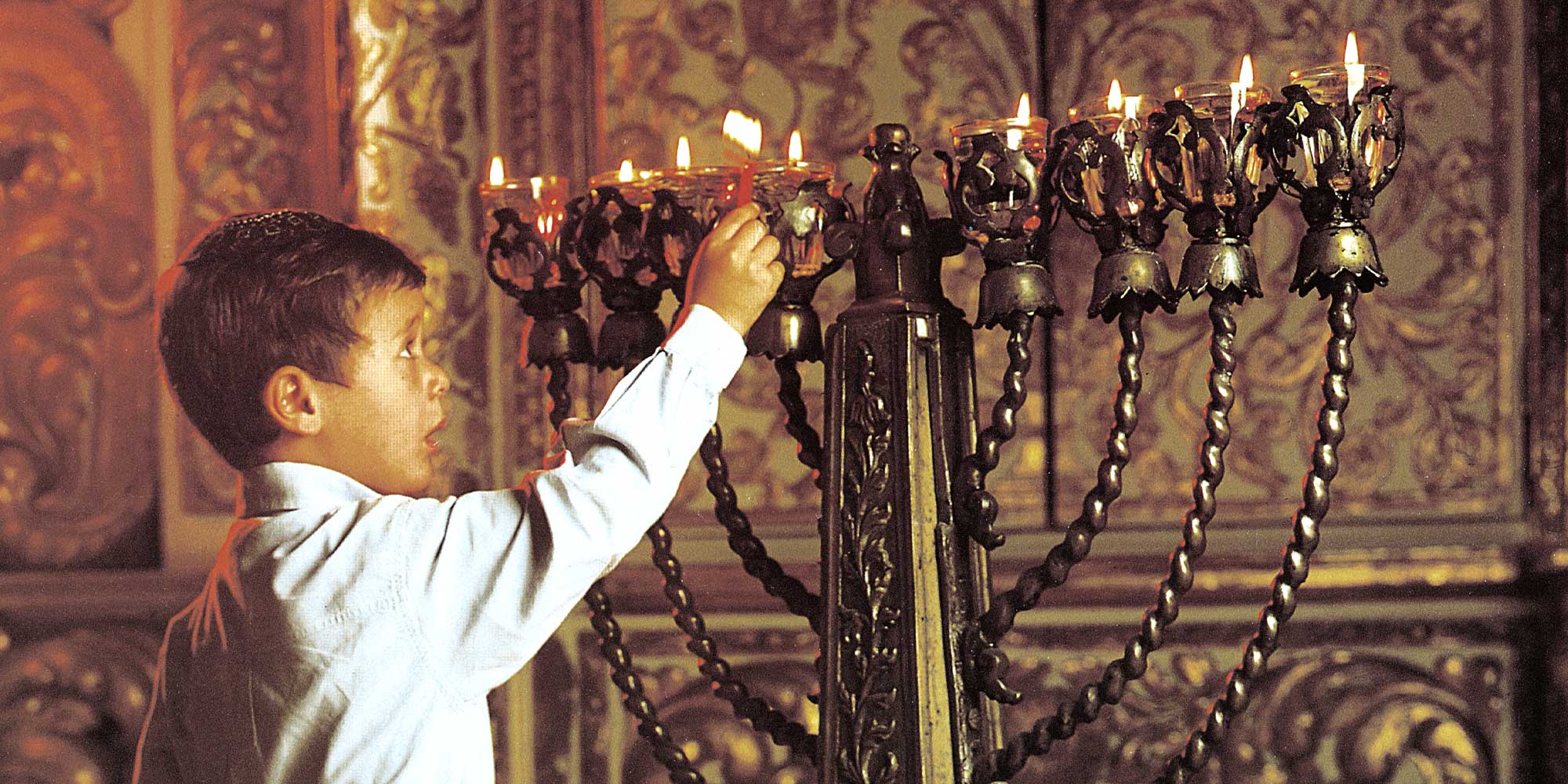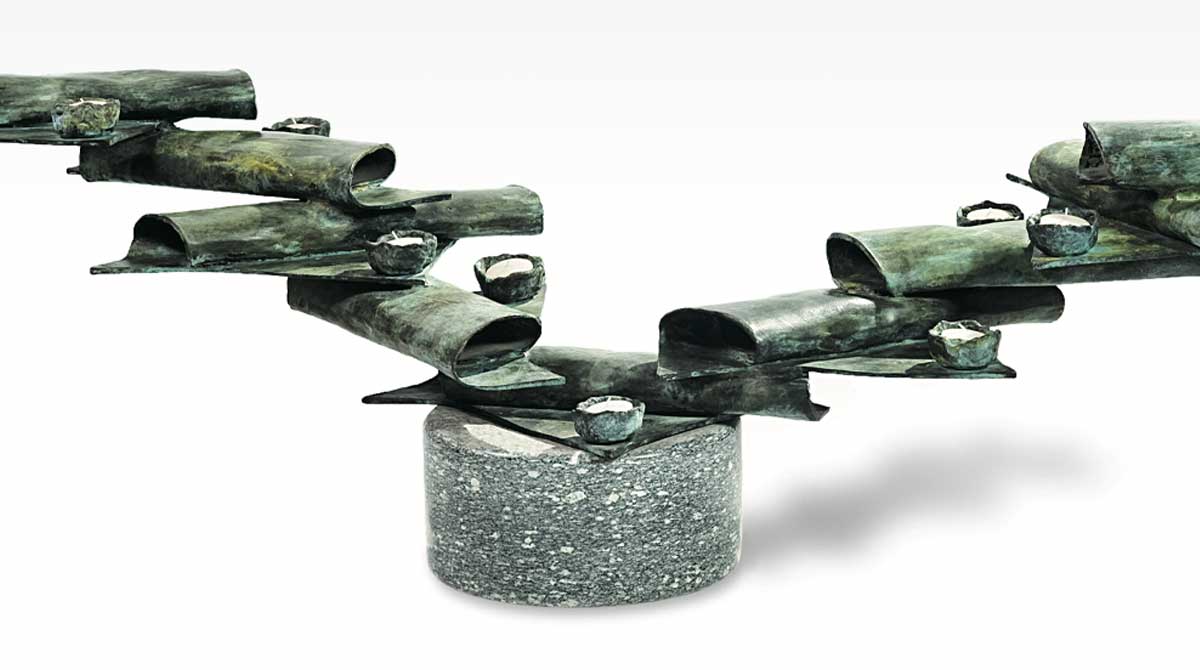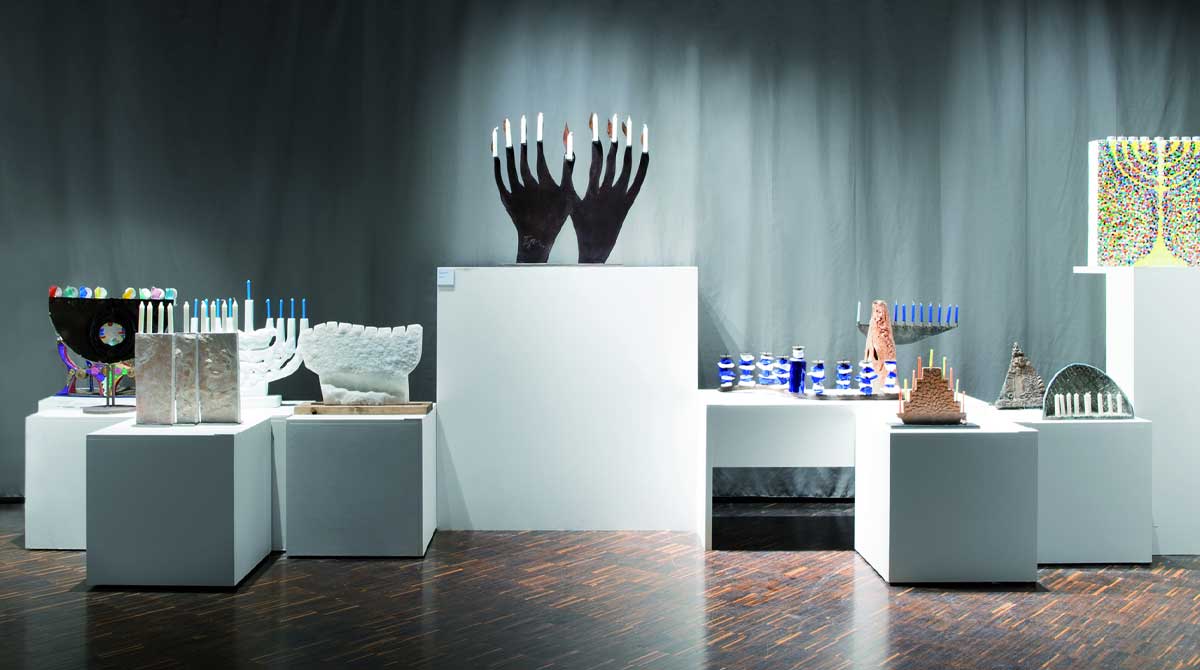The festival of light, the genesis of a project
In Hebrew, the word hanukkah means “inauguration”. The festival of Hanukkah is dedicated to light and begins on the 25th of the month of Kislev, a date indicated by the Jewish lunar calendar, which has its equivalent in December, near the winter solstice. The celebration lasts eight days. The accompanying ritual is simple: at sunset, the family and friends gather around a candelabrum made up of eight lights, one for each day, plus a ninth called shammash – the “servant” – used to light the other lights.
The occasion commemorates the miracle of the rededication of the Temple of Jerusalem in the year 165 B.C.E. after the occupation by the Greeks. On this occasion, the re-lighting of the candelabra – the light that signifies the life and vitality of Jewish thought – was planned. According to the ritual, it must always be fuelled with pure, kosher olive oil. The Talmud recounts that after the reconquest of the Temple, the Maccabees, having defied many despite being few in number and winning, undertook the immediate restoration of Jewish worship and, having cleansed themselves, were about to rekindle the permanent light, when they discovered that only one small bottle of pure olive oil had been saved, which would last one day. The Maccabees were faced with the choice between lighting it immediately, knowing that it would be switched off again the next day, or postponing the lighting for eight days in order to produce the oil necessary to ensure its continuity. They lit it, and the lamp, miraculously, remained lit eight days, the time needed to produce new kosher oil. It can therefore be said that the festival of Hannukkah absolutely celebrates the will, the choice to be, to exist, of the Jewish people. The reopening of the Temple was strongly desired, it meant affirming to be there – to count and to count oneself – to make a difference, as already mentioned of wanting to exist, to live and to recognise oneself in a common essence.
To commemorate this miracle, and to pass it on to posterity, a special ritual was instituted by the Masters of the time: the lighting for eight consecutive days of a special lamp with eight beaks called a hanukkiah. This lamp is lit, during the festival, in every Jewish home after sunset, on the eight days following the day corresponding to the 25th of Kislev, in the following manner: one lamp on the first evening, two lamps on the second, and so on until the eighth evening, when the hanukkiah will appear lit with all its lamps. Moreover, the Hanukkah lamp is a liturgical object because it is functional to the ritual of the feast, but at the same time a domestic object – it is lit in the home – and also a public one, because it must be placed on the window and can be seen from outside the home.





